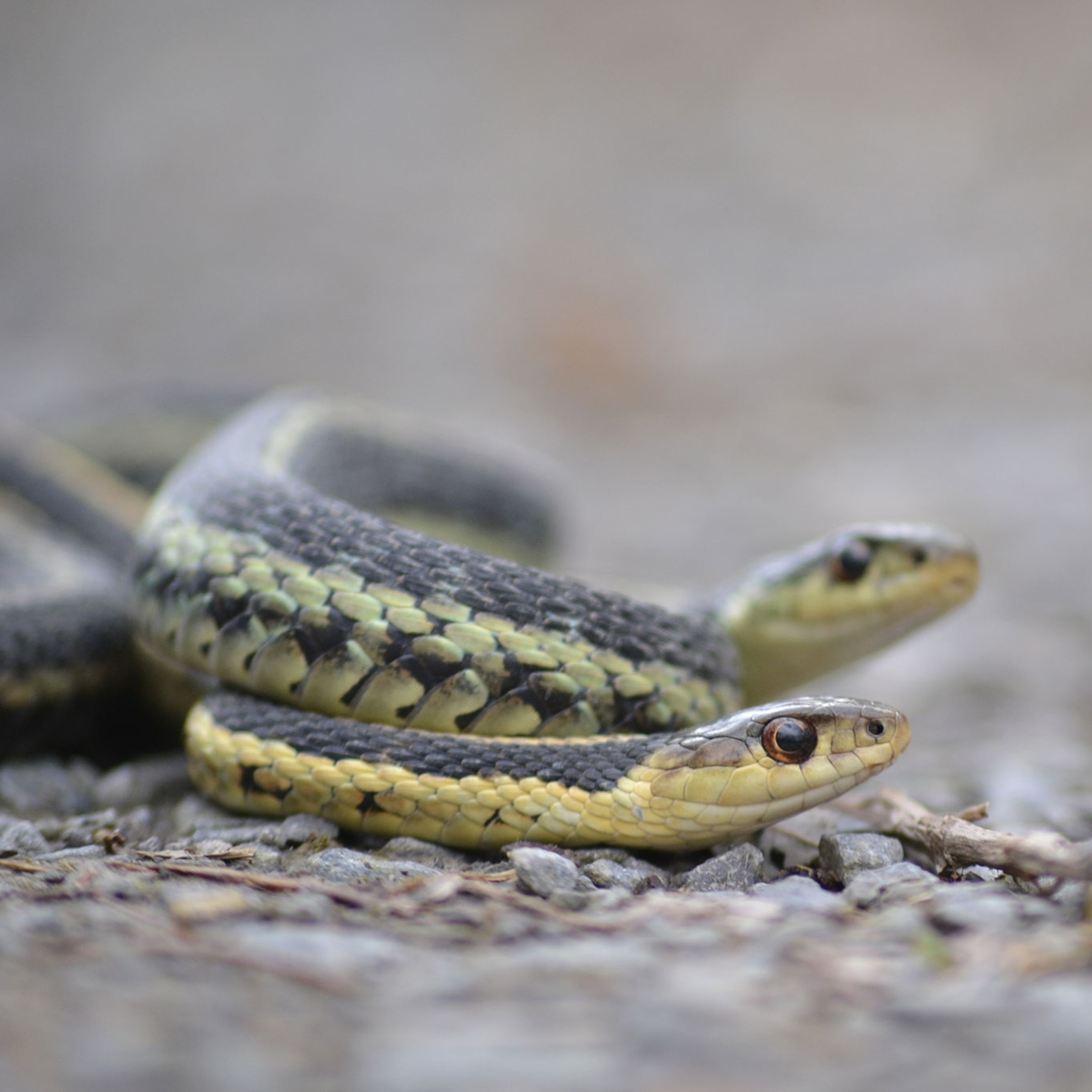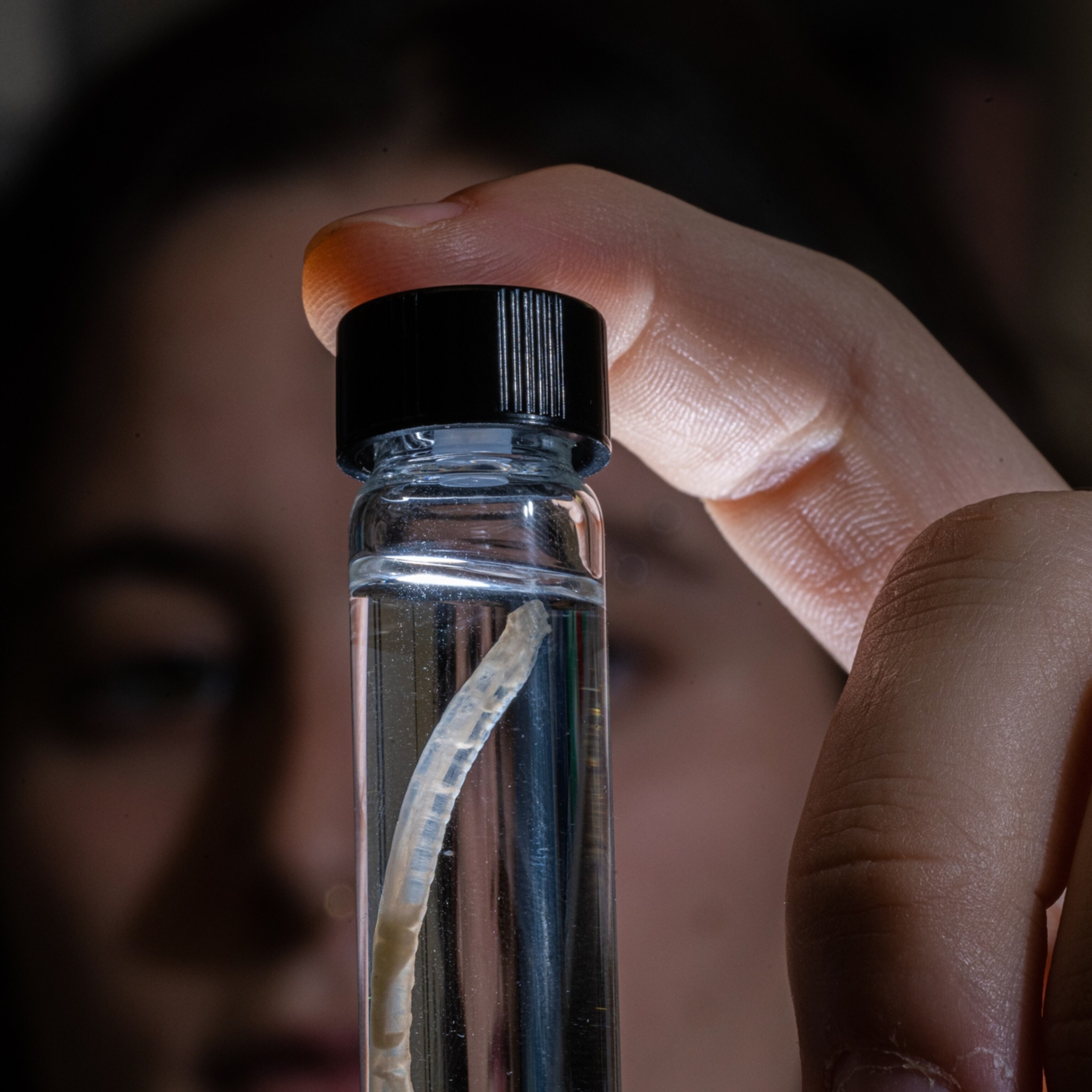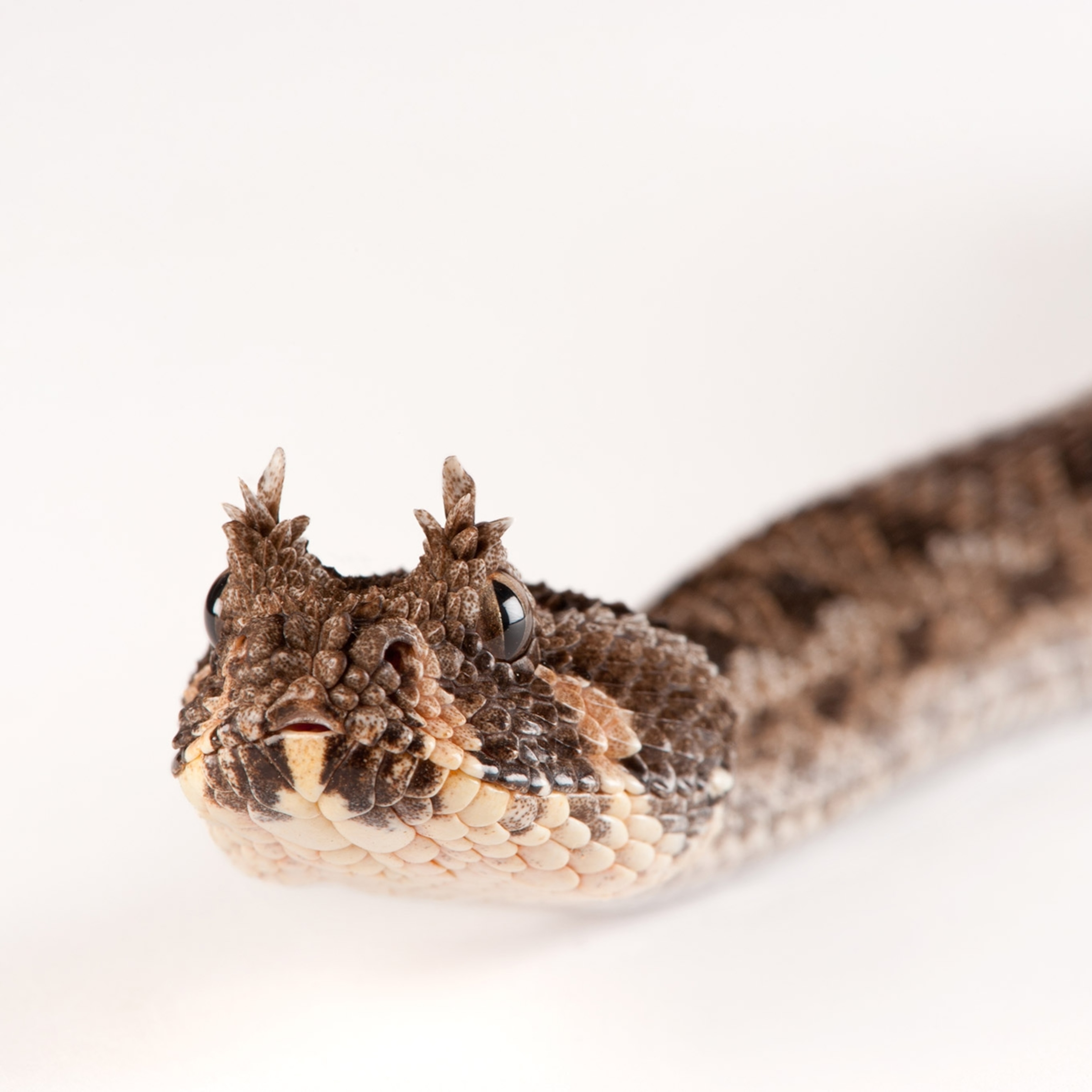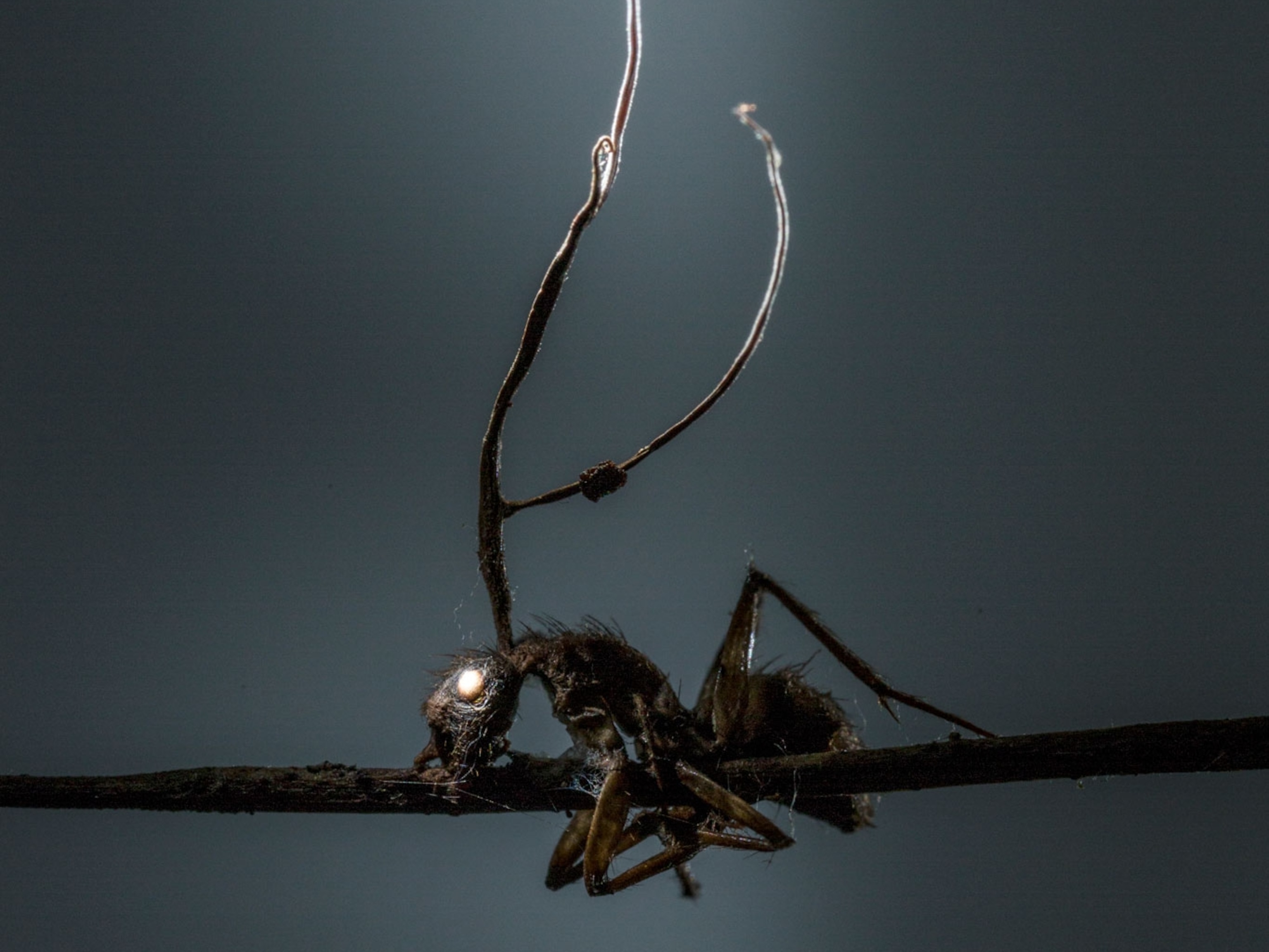
Tropical snakes disappearing as fungal outbreak decimates prey
The chytrid fungus has devastated amphibians around the world; a new study shows it can drive their predators, like snakes, extinct as well.
For the last half century, a deadly fungus has wiped out populations of frogs and salamanders around the world. Known as chytrid, it has driven the decline or extinction of at least 500 species, making it the world’s most destructive pathogen in terms of biodiversity loss.
Naturally, that’s bad news for the animals that feed on amphibians. But scientists know almost nothing about the contagious fungus’ impacts on food webs around the world.
Now, a new study published this week in Science suggests that the amphibian decline has taken a heavy toll on tropical snake species that feed on frogs. After the disease swept through Panama’s Parque Nacional Omar Torrijos Herrera beginning in 2004, the overall number, diversity, and health of snakes declined significantly, the paper found. That’s likely true for other amphibian predators as well, the authors say.
(A Fossil Snake With Four Legs)
There’s a high probability that at least a dozen snake species disappeared from the area and perhaps many more, says Elise Zipkin, a study co-author and quantitative biologist at Michigan State University.
The striking decline in snakes is likely to have its own ecological effects, and hints at a much broader impact to the overall food web.

“It’s got to be affecting the birds and the mammals, and everything else,” says Julie Ray, another co-author and an adjunct professor at the University of Nevada, Reno.
That’s why the study should matter “even to people who might not like snakes,” she adds.
Snake loss
While it may seem obvious that a decline in amphibians could impact its predators, showing that this is true requires having long-term data from a particular site, which is very rare and difficult to attain, says Kelly Zamudio, an ecology professor and herpetology curator at Cornell University who wasn’t involved in the paper.
Observations and data for the study were painstakingly collected during on-the-ground wildlife surveys over more than 13 years in the Panamanian park, near the community of El Copé, about half before and half after chytrid swept through the area.
The raw data alone was enough to suggest that chytrid was indirectly harming the snakes. Before the fungal invasion, the scientists recorded seeing 30 different species; afterward, they found 21, and in far fewer quantities. Of the species that were seen five or more times, more than half were seen less often afterward.
But many of the species are very rare: Thirteen of the 36 snake species the researchers saw over their 13 years in the field were spotted only once. Many others were seen only a few times. That raises the question: How do you estimate species abundance with such few sightings?
Zipkin used a mathematical model to infer population trends based on the snake sightings, which suggests that many of these rare species went locally extinct, and that the area lost at least a dozen species.
The paper suggests there’s a “striking shrinking... and homogenization of the population,” Zamudio says. “The community is forever changed,” she says, “and many species may be completely gone.”
“To me that’s an incredible example of how important it is to collect data like this,” Zamudio says.
‘It just really hits you’
Co-author Ray, who collected data in the same Panamanian national park over the course of eight years, did not set out to look at the impact of the fungus, known as Batrachochytrium dendrobatidis (Bd). In fact, it arrived just before she started her data collection in 2005. (Learn more: Amphibian 'apocalypse' caused by most destructive pathogen ever.)
The task at the time was to count the number of snakes and learn what they ate, as part of a doctoral study on two genuses that were thought to mainly eat snails, like the Argus snail sucker (Sibon argus), a slender serpent with a blunt head and slightly protruding eyes.
As it turns out, the snail-sucker doesn’t really suck snails, as previously thought. Rather, it preys mostly on frog eggs—which became a problem. Before the fungus came through, researchers, including co-author Karen Lips at the University of Maryland, recorded seeing the animals 149 times. But that number declined by a factor of three post-fungus, and those animals that Ray did come across were often emaciated and malnourished, she says.
Snakes such as these, she explains, sometimes only eat once a year—and so they can survive, albeit in a sorry state, for a long time after their prey has vanished.

Ray, who previously worked in two other sites in Panama before starting at the El Copé study site, watched as frogs began to perish. Within six months of chytrid’s arrival, the vast majority of frogs died, their bodies piling up in streams.
“It's insane how many more frogs you could see pre-decline than you could after,” she says. Previous research by Lips and others found that chytrid reduced amphibian abundance by 75 percent in the area, and led to the extirpation of at least 30 species. (Read more: Half of all amphibian species at risk of extinction.)
But then, her study species—snakes—began to be affected. Going out each night, she would find fewer and fewer snakes.
“Partly you’re so caught up in the moment, trying to get the data,” she says. But eventually, it becomes clear that “these are real numbers connected to real animals. It just really hits you.”
Up and down the food web
The loss of amphibians will have other ecological impacts besides those on snakes. Moving down the food chain, removal of frog tadpoles has been shown to lead to more algae growth in streams, depriving them of oxygen. Moving up the web, the loss of the snakes has its own repercussions.
“The snakes are so important for the environment, if you take them out, the whole thing can collapse,” Ray adds.
“I suspect there are likely additional predators and prey that have been impacted by the loss of amphibians,” concurs Jamie Voyles, a biologist at the University of Nevada, Reno, who wasn’t involved in the work.
“This study also underscores the devastation that chytridiomycosis”—the technical name for the pathogenic infection—“and emerging infectious diseases in general can have on the web of life,” she adds. “It shows that emerging infectious diseases can have impacts that reach beyond anything we previously understood.”
Luckily, there are glimmers of hope, with a small subset of amphibian species showing signs of resistance; some populations are beginning to slowly recover. A few snake species were also able to switch to different prey, such as lizards, and some serpents that don’t eat amphibians appear to increase in number, likely due to reduced competition.
But chytrtid’s effects are just beginning to be understood—and will undoubtedly be long-lasting or permanent.








